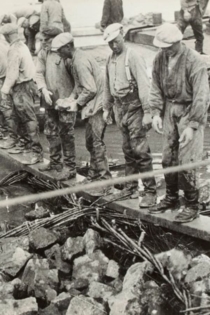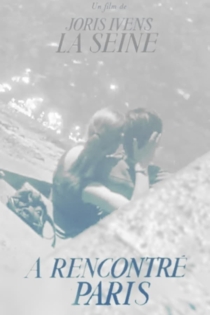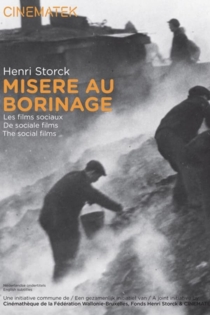
Joris Ivens
1898 - 1989Ivens studied economics and photography. From the end of the 1920s, he was one of the vital figures in the world of Dutch avant-garde film. As a technical consultant, he was involved with the Filmliga, and made important avant-garde films like De brug and Regen. He also founded the film company Studio Joris Ivens, where young, enthusiastic filmmakers could find a home. The Studio was the cradle of experimental film in the early 1930s.
Ivens developed into a political filmmaker, and with films like Borinage, Spanish Earth, and Indonesia Calling!, he grew into a leading documentary filmmaker.
Comment Yukong déplaça les montagnes
Joris Ivens, Marceline Loridan-Ivens
Joseph Losey
From 1972 until 1974, Joris Ivens and Marceline Loridan, along with a Chinese film crew, documented the last days of the Cultural Revolution, marking the end of an era. The vast amount of footage they shot was edited into 14 films of varying lengths. Focusing on ordinary people spread over a wide geographic area—many of whom were living and working in collectives—the filmmakers recorded a unique moment in history, and also captured some of the more enduring aspects of Chinese culture.
How Yukong Moved the Mountains
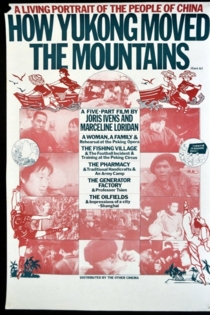
Pour le Mistral
Joris Ivens
Roger Pigaut
Dutch documentary filmmaker Joris Ivens follows the course of the famous wind as it originates in the Alps and finds its way to the Mediterranean Sea. Natural sounds and creative camera work provide a mood film showing the effect of the fury of the wind on the life of southern France.
The Mistral
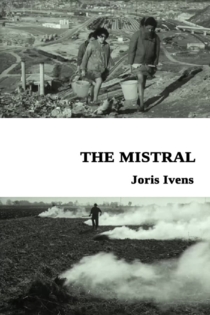
…A Valparaíso
Joris Ivens
Roger Pigaut
In 1962 Joris Ivens was invited to Chile for teaching and filmmaking. Together with students he made …À Valparaiso, one of his most poetic films. Contrasting the prestigious history of the seaport with the present the film sketches a portrait of the city, built on 42 hills, with its wealth and poverty, its daily life on the streets, the stairs, the rack railways and in the bars. Although the port has lost its importance, the rich past is still present in the impoverished city. The film echoes this ambiguous situation in its dialectical poetic style, interweaving the daily life reality (of 1963) with the history of the city and changing from black and white to colour, finally leaving us with hopeful perspective for the children who are playing on the stairs and hills of this beautiful town.
Valparaiso

Le dix-septième parallèle, la guerre du peuple
Joris Ivens, Marceline Loridan-Ivens
On the border of North and South Vietnam, civilians live underground and cultivate their land in the dead of night, farmers take up arms, and bombs fall like clockwork. Joris Ivens and Marceline Loridan’s record of daily life in one of the most volatile regions of a war-torn, divided country is both a hazardous piece of first-hand journalism and a shattering work in its own right, simmering with barely repressed anger.
The 17th Parallel
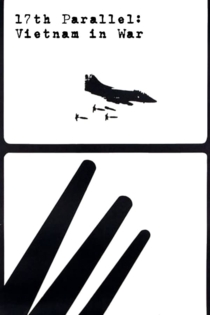
L'Italia non è un paese povero
Paolo Taviani, Joris Ivens
Enrico Maria Salerno
A documentary about Italy's underground oil and metan deposits, sponsored by Italian state-owned oil company, ENI. Pictures of the state-of-the-art oil infrastructure are mixed with others of the traditional way of living of poorer Italian regions.
Italy Is Not a Poor Country
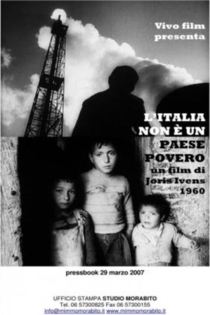
Nieuwe gronden
Joris Ivens
Joris Ivens
The film is a documentary portraying a struggle as man tries to subdue nature. To prevent flooding and for purposes of land reclamation, the people of the Netherlands struggle and succeed in building a breaker, thereby eliminating the wild inland body of water once known as the Zuider Zee (now called Ijsselmeer).
New Earth

Le Ciel, la terre
Joris Ivens
Joris Ivens, Hồ Chí Minh
Pro-Vietnamese film created by Dutch filmmaker Joris Ivens. This black and white film begins with an introduction by Bertrand Russell, who explains the history of the run-up to the American involvement in Vietnam. The film shows scenes of Vietnamese soldiers in trenches, American helicopters, agricultural workers, and children assembling anti-aircraft shells. A narrator speaks of the American invasion as being on par with the Germans during World War II and characterizes the Vietnamese as resistance fighters. Anti-American protests are shown. Ivens is shown interviewing Ho Chi Minh. Vietnamese villagers build dams for rice paddies, make traps using bamboo spikes, and take cover during air raids. Scenes include the headquarters of the National Liberation Front, a military execution, bombings, and villagers attempting to shoot down US bomber planes.
The Threatening Sky


